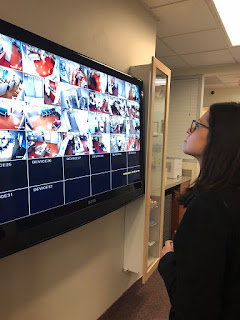With the epidemic of dry eyes and meibomian gland dysfunction, most eye surgeons are seeing, a new concept has come to my mind:
“Is what I am looking at, ‘eye worthy’? Is it ‘meibomian gland worthy’?”
“Is what I am looking at putting my eyes and meibomian glands at risk?”
“Do I want to risk having chronic eye pain, irritation, redness, for the rest of my life by choosing to use my eyes for this activity?”
These may seem silly questions to most, but as I continue to see younger and younger children with severe meibomian gland atrophy, it is important for everyone to ask themselves these questions and especially for parents to ask themselves this for their kids. And I think teachers need to ask this for their students.
There may come a time where assigning homework on the computer or coordinating meetings on the computer with young children for school is frowned upon by everyone. We may be getting there soon.
Everyone will have decide for themselves but below are my thoughts on what is “Eye Worthy” and “Meibomian Gland Worthy” for kids and adults.
If you have been following my blog and research, you know that I am very concerned about the loss of meibomian gland structure and function in all my patients, particularly those who are in chronic pain, those about to have cataract, pterygium or any other surgery (as their visual outcomes can be greatly affected by dry eye disease and meibomian gland dysfunction), AND all the young kids we are seeing with corneal signs of dry eye and new corneal scar tissue affecting their vision.
I have introduced these new dry eye terms “Eye Worth” and “Meibomian Gland Worthy” to these kids and many patients casually, but I want to formally emphasize that everyone should think about this whenever something is brought to the attention of their eyes. They have to make a split second decision at times to either look away so as not to get drawn in (likely a majority of stimuli on regular tv is not “eye worthy”) OR pay closer attention (like your child is about to spill a gallon of milk on the floor).
When meibomian glands are almost gone, I tell patients, you have to stay away from “non-eye worthy things,” like video games, facebook, instagram, random internet stuff. And of course you have to blink fully (no partial eye blinks) around every 4-5 seconds and look away ever 5-10-20minutes for 5-10-20 seconds depending on the severity of the meibomian gland atrophy. In general, everyone, especially children, should be encouraged (…maybe even forced at school) to look away from the screen every few minutes (there is no research to say what is optimal but I would err on saying at least every 5-10minutes for young kids doing homework on the computer); look away for 5-10 seconds with many full, purposeful blinks, looking 5-10-20feet away (preferably outside).
But often there is an addiction involved and patients cannot turn off their phones for hours on end. Often, it is very hard, even painful, to not check messages, texts, emails, etc every few minutes.
The book Irresistible, an “Eye Worth” book (thank you to Lisa S. for recommending this book), shockingly explains how many addictions can cause incredible brain re-wiring to the extent that all other bodily needs, such as eating, sleeping, and I would have to add involuntary and voluntary blinking, are put aside.
The sad story of the Korean couple that allowed their baby to starve to DEATH because of their addiction to video games (see link), highlights the physiological risk of addictions. http://www.newsweek.com/2014/08/15/korean-couple-let-baby-die-while-they-played-video-game-261483.html
The issue is that most US school systems and parents have happily put into the hands of millions of children, addiction-inducing gadgets without any type of medical investigations or controlled trials performed ahead of time.
The book by Cal Newport, Deep Work, is also an “Eye Worth” book that emphasizes the need for everyone on the planet to relearn how to deeply concentrate and not allow ourselves to be distracted so easily. I will have to look at the literature but I suspect one’s blinking rate decreases when one is on an addictive device, such as virtual reality headsets, in addition to the known addictive devices of smartphones, tv, laptops, ipads, etc.



